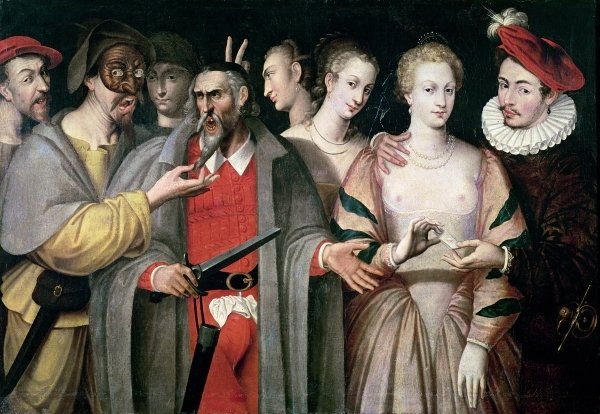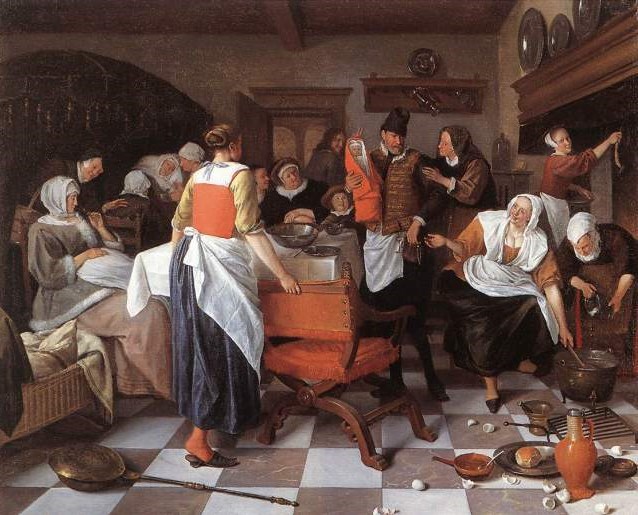Most cuckolding aficionados who are familiar with cuckoldry and its history are aware of the cuckold horns hand sign. Let’s explore how the hand sign originated. There are various theories about how the two finger sign came to symbolize cuckolding. And how it also signified humiliation. Some historians feel the sign originated as a symbol of ironic mockery. Horns represented masculinity and virility which a cuckold lacked. Even the essence of horns held magical power in times past. Older or impotent men were frequently prescribed a powder of ground buck horns to treat libido issues in the Middle Ages. Hunters noted that various beasts used their horns to rub bark off trees to mark territory. Males who had no horns could not mark or claim their territory including their wives. Another theory purported the sign of the horns signified that the weaker male didn’t know that the beast with horns had crept up behind him and stolen his wife. Even today in select European countries, throwing the horns behind a man’s head is a sign of humiliation or cuckoldry.

What is also interesting about cuckolding history in Europe, the British Isles and Scandinavia, is that the wife who strayed on her husband to have sex with another man, thereby committing infidelity, was not punished. In other cultures, the punishment for infidelity might have been extremely severe, including the sentence of death to the cheating wife. Instead, the reality or rumor that a wife strayed from her husband was cause to believe her husband was impotent, unmanly, weak, sterile or a combination thereof. And the man who slept with her was perceived as virile and powerful. Cuckolding structured a male hierarchy. This biological imperative and social practice allowed women to pursue sex with Alpha males. Sex outside the marriage with a superior male served the perpetuation of humanity at a time when life was fragile due to wars, famine and disease. A woman seeking out an Alpha male for sex and ultimately to mate and bear offspring, was ensuring that the most superior Alpha genes continued.

In this classic painting dated 1664 by Dutch master and contemporary of Rembrandt, Jan Steen, titled “Celebrating the Birth”, we see cuckolding en tableau. This scene is visually rich with cuckolding imagery. Note the grinning man miming the cuckold sign of the horns above the baby’s head. Interestingly, art historians determined the cuckold hand sign had been painted over during the 19th century. This defacement was likely ordered by a collector or curator who took offense to the cuckolding horns and viewed them as profanity. The painting was restored to its original status only thirty years ago.
The man illustrating the cuckold humiliation is believed to be the artist himself who inserted his likeness into the painting to add contrasting emphasis to the cuckold, an older man holding the newborn baby. Art scholars believe the baby to be a son. A celebration would traditionally be held to herald a male heir. However, this is obviously not the older man’s child, but the child of the man portrayed by the painter. Symbolic elements in the painting reveal more metaphor. The brass bed warmer conspicuous in the forefront of the painting, signified that coals in the bed warmer were keeping the bed warmed. It denotes a lack of marital sex. The older husband had lost his libido. The wife is not so much a powerful cuckoldress as a resourceful woman with no other options but to engage in sex with another man, driven to do so by her husband’s impotency in order to produce heirs or offspring.
The older man is holding quite a large purse which indicates some level of wealth. This wealth has enabled him to attract the younger bride and to provide for her. But the painter has added a few other elements which mock the supposed father. Namely that he is wearing an apron and holding a set of keys. Key holding in that time was the duty of the woman of the house, sometimes referred to as the chatelaine in larger households. Wearing an apron is a humiliating emasculation. Other symbolism includes the eggshells on the floor, eggs which had been cracked and used as ingredients to prepare a celebratory feast. The term cracking eggs was an expression for having sex in 17th century Europe. Obviously, the girl grabbing the phallic looking limp sausage hanging above the fireplace illustrates strong sexual innuendo. Note her gaze is deliberately directed outward to those viewing the painting instead of interacting with the family, midwife or other cooks. She wants us to be aware of the sexual farce unfolding before us.
The origination of the term cuckold comes from the cuckoo bird, the bird synonymous with the cuckoo clock. Cuckoos have an interesting mating phenomenon which orders the Alpha and beta of the species, both male and female. Alpha cuckoo birds mate with Alpha females. Alpha females reject beta male sexual advances. However, female cuckoo birds will allow beta males to help build nests, sit on eggs to keep them warm and feed hatchlings. This especially frees the Alpha female of such time-consuming responsibilities and allows her to resume her sexual availability for mating… furthering the perpetuation of the species. In addition, Alpha females will sometimes lay their eggs in a lesser female’s nest expecting that female and her beta male to raise her feathered flock.
As observers of cuckoo bird behavior, Germans, Swiss and Austrians began fashioning the signature clocks centuries ago. These Europeans also originated the bird’s name from the unique sound of their bird call. The term cuckold is thus derived from the cuckoo’s sexual and domestic behavior. Cuckoldry exists in many species as cuckolding is, at its very essence, crucial to the survival of a species. Cuckolding frees up genetically superior members of a species from familial duties, so they can focus on mate selection and mating.
It is important for human beta males and cuckolds to realize they are not viewed as mating material by females. Nevertheless, cuckolds do have a place in the world, to sustain higher status females who seek superior males for mating and to support these females once they do. Alpha males will literally swoop around spreading their genetic material. It is their purpose. Their purpose is not to be burdened with raising a family or a flock. That burden falls on the cuckoo cuckold.
Nota bene:
Orson Welles ad libbed these lines in the classic film, The Third Man (1949). Enjoy.
“In Italy for 30 years under the Borgias, they had warfare, terror, murder, bloodshed. They produced Michelangelo, Leonardo da Vinci and the Renaissance. In Switzerland they had brotherly love, five hundred years of democracy and peace. And what did that produce? The cuckoo clock.”
